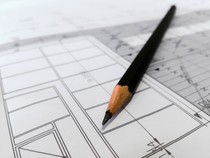
In the first of a two-part series, this month’s newsletter takes a closer look at self-build budgeting.
The most important part of any self-build project is the initial planning stage; getting this right is crucial to building a home that will accommodate your family’s needs, expectations and lifestyle.
Care and consideration at the design stage is vital; otherwise it could become unnecessarily costly. The greater detail in the design, the more costly your self-build becomes. Once your design is in place, it’s possible to take a set of drawings to a builders’ merchants; most will charge a nominal fee, but deduct it or refund you if you use them to provide your build materials.
It’s also important to consider your family’s future. Might you be expanding in a few years’ time? Talk to your architect during the design stage about the potential of extending in the future.
|

Cashflow and budgeting
Cashflow and budgeting are extremely important throughout self-build projects; any successful self-builder will tell you how easy it is to get carried away with fixtures and fittings!
But buying expensive fixtures and fittings can increase a budget significantly, as we often see on programmes like Grand Designs. Keep in mind that luxury fixtures can always be changed or added at a later date, once your home is built.
It’s worth shopping around and seeking out deals online; you can often haggle or negotiate a price with your chosen supplier, if, for example, you’re looking to purchase several bathroom suites. Do ensure materials arrive on site when they are needed, as delays can be costly.
|

Costing up your home
Be clear from the start what you can afford, then make a list of all the items you’ll need for your self-build and research typical costs online.
Don’t forget to include things like professional fees, architectural costs, agent’s fees, self-build warranty, lenders charges, planning and building regulations fees and structural engineering fees (dependant on the dynamics of the land).
Professional service fees can run into thousands of pounds, so it’s important to factor these costs into your budget to ensure they’re not overlooked.
At the initial stage, be clear what your architect will be providing for you; some architectural designers will take you through the entire planning process, provide a design and access statement, and complete both parts of a CIL relief application for you.
|

Landscaping considerations
Costs for landscaping should also be included at foundation stage, especially if you’ll need to remove considerable amounts of soil from your site in preparation for the foundations. Think carefully about whether the soil can be incorporated within the site, since earth removal can be expensive.
Alternatively, if you have a large enough plot, soil can be stockpiled and sold. If you place too little or too much topsoil in rear inaccessible gardens, then you may need to spend additional money dealing with it at a time when access has been restricted.
|

Be prepared
Inevitably, delays can happen on any new build. Whether it’s delayed deliveries, tradesmen held up on another build site, a simple technical glitch and or the good old unpredictable British climate, it’s important to be prepared for setbacks.
It’s sensible to allow for a minimum contingency of at least 10%; the national average is between £15k - £20k, with the exception of London.
And finally, don’t forget to cost up renewable energy products for your new home. The initial cost of buying sustainable energy systems may be high, but in the long run you will potentially save hundreds of pounds in annual heating costs.
|
|